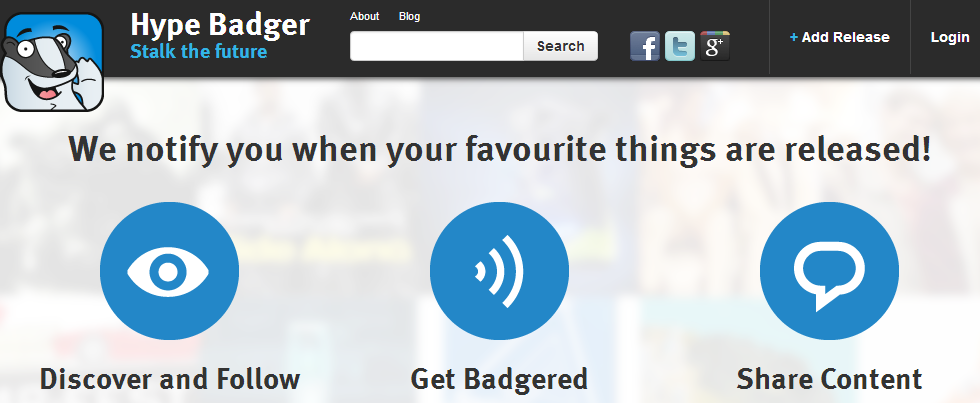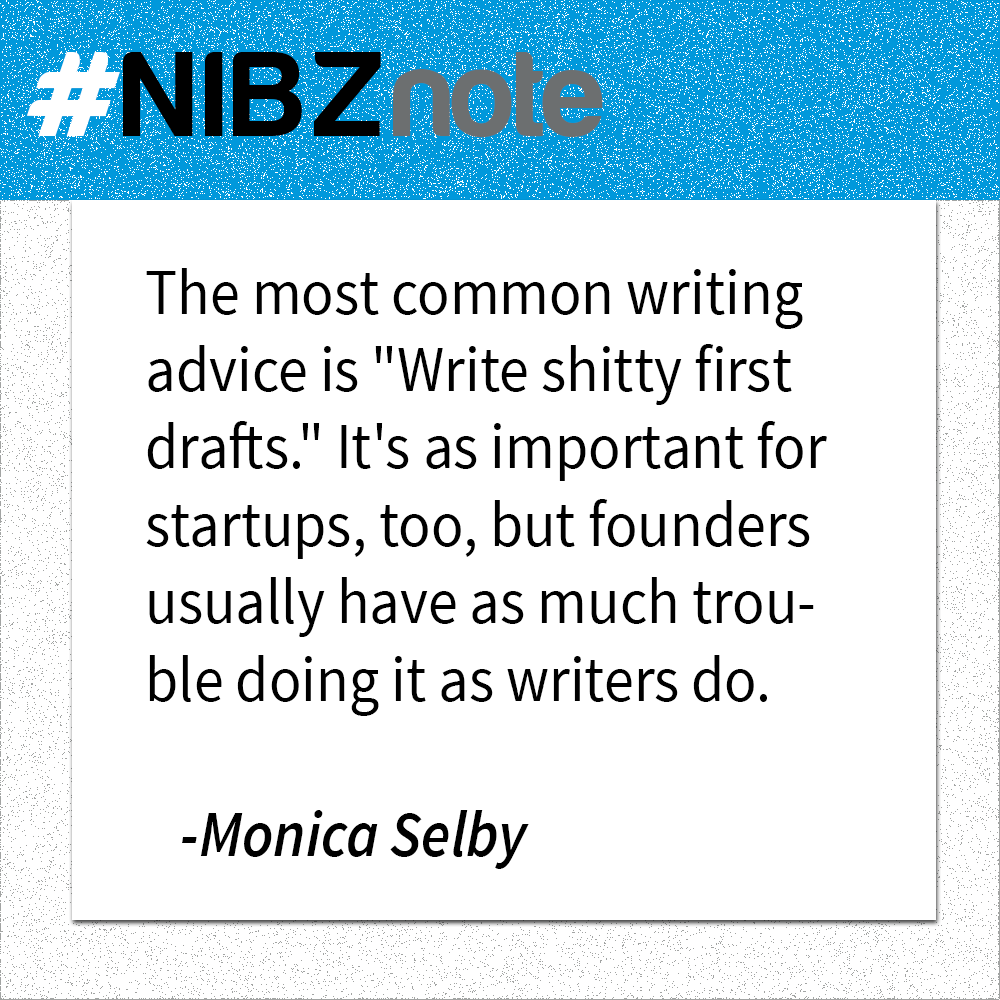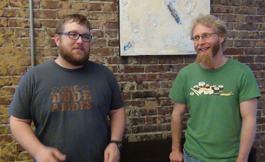
Don’t you hate it when you miss the release of a new movie or game you were really excited about? There are so many new things popping up every day that it’s hard to keep up.
That’s what the new website Hypebadger is for. Just tell the site what release you want to follow, and you’ll receive an alert on the release date. Easy as that.
Hypebadger is interesting for 2 reasons. First, the team is the definition of “distributed,” with an entire ocean separating certain members. Second, while the idea has some merit for individual users, it could be a boon for independent artists, filmmakers, and musicians. Hypebadger will remind fans of when their favorites are releasing new products, helping those artists actually make money.
Hypebadger is very young, still testing out their MVP. But, if you’re an early adopter, they would love to hear your feedback as they build out the next phase.
Check out our Q&A with Brad Rach:
What does your company do?
Hypebadger is a website designed to allow users to follow and receive updates on unreleased products that they’re interested in. For example, if you hear about a new movie that you’re interested in, but you’re not a huge movie-goer you might forget about it and miss it in theaters. With Hypebadger, you go to the site, ask to be “Badgered” by the movie, and when it is released you receive a notification telling you that it came out.
Who are the founders, and what are their backgrounds?
The founder of the project is Chris Horsnell. Chris is a developer based out of Milton Keynes (outside of London, England) Chris built the MVP prototype over a summer and then brought on myself and two other founders. David Bannister is our User Experience optimization expert and is based out of London England. Chloe Bromfield is the project’s designer and is from Northampton. I’ve taken on the role of Marketing and Business Operations, and I’m a Project Manager from Ottawa Ontario.
What’s the story behind your idea?
HypeBadger was dreamed up when Chris was following the release of a mobile game (Star Command). He constantly checked for updates on the game: images, videos, and eventually its release. Chris was dedicated enough to do this, because he was very interested in the game, but all the while he kept thinking that it would be nice to just wake up one morning and be reminded that the game was coming out.
So Chris started building HypeBader on March 22nd, 2013. Over that weekend, Chris would put the kids to bed and work all night on his product. By the end of the weekend he had built the bones of what would become Hypebadger. He spent the summer refining the product and building out the founding team.
Where are you based?
Hypebadger is a nice example of a global team. I work out of Ottawa, Ontario; and have never even traveled outside of North America. Chris is located in Milton Keynes, a town near London.
What’s the startup scene like where you are based?
In Ottawa, the scene is very heavily focused on tech and small bootstrapped startups. On the other side of the equation, Milton Keynes is not a large city, and has a fairly small startup community. However its proximity to London certainly helps with becoming involved in that community. Hypebadger is not a project defined by the physical boundaries of the location. Because its a purely digital service, the team resonates more with the startup scene online, on sites like CoFounders Lab or Reddit.
What problem do you solve?
Hypebadger solves two problems. The first, with the most broad appeal, is the issue that countless people have where they lose track of upcoming movies, albums, games, events, etc. With HypeBadger they don’t have to face this issue anymore, as soon as they’re interested in an announced release, users can go onto the website and follow the item for the future.
The second problem that Hypebadger solves is that many independent developers, filmmakers, musicians, or entrepreneurs don’t have an easy way of keeping the interest of fans. They often get a short window of interest, but lack the marketing budgets to announce their releases. Hypebadger will be a game changer for them, since they can ensure that interested fans receive a direct notification as soon as they launch.
Why now?
With the popularization of Kickstarter, more and more independent companies have begun producing their products. The market is becoming very saturated, there are countless sources for news, and its easy to lose track of things in information overload. Hypebadger is needed now more than ever, to help users keep track of the products that they’re interested in.
What are some of the milestones your startup has already reached?
Hypebager has already finished building a minimum viable product (MVP) to test the concept. We have also exceeded 250 users.
What are your next milestones?
Hypebadger is hoping to hit our 1000 user mark within the month. Our next major development milestone will be to complete an Android application.
Where can people find out more? Any social media links you want to share?
Website: http://www.hypebadger.com/
Twitter: https://twitter.com/hypebadger
Facebook: https://www.facebook.com/HypeBadger
Google+: https://plus.google.com/103391743539144654189/posts
 version of the site. It took less than six hours to build something that now attracts 40 million new users a month, raised $17 million in VC funding, and very recently stirred up and survived an internet-wide controversy (which may only make it more popular).
version of the site. It took less than six hours to build something that now attracts 40 million new users a month, raised $17 million in VC funding, and very recently stirred up and survived an internet-wide controversy (which may only make it more popular).




